|
Introduction
Over the years,
I've come across
references to Kandinsky
in unexpected fields:
medicine, psychology,
physics, astronomy, and
more. It has always
intrigued me that
Kandinsky's work
had such impact beyond
the arts, and in areas
I know little about. So
this charming comment
on social media caught
my eye and made me
think:
"Before I could
afford a professionally
painted piece of art, I
had a very large
Kandinsky print on my
dining room wall. He
was my most favorite
artist for a few
decades. I could relate
to his art because I
was a design engineer
and his art was all
about shapes and
engineered like
drawings."
This comment was made
by the exceptional
David Karamian,
engineer-artist, and
artist-engineer. I
asked him to expand his
remark for this
series—to
challenge us and help
us see a Kandinsky
painting through his
eyes. He is this
month's Guest
Writer, and what
follows is his
thoughtful and
stimulating response.
Lissa Tyler Renaud
Founding Editor, "Kandinsky Anew" Series
Oakland, California
*
Finding Inspiration in Kandinsky: The Art of Design Engineering
David Karamian
In the world of
creativity, unexpected
turns often lead to the
most profound
discoveries. My own
artistic journey began
in an unlikely
place—design
engineering. Growing
up, I was always
inspired by art,
avant-garde jazz, and
contemporary music. My
heart longed for an
education in the arts,
but life had other
plans, guiding me
towards a career in
engineering. Little did
I know that this path
would eventually lead
me to a captivating
world where art and
design intersected, all
thanks to a fateful
encounter with the
works of Wassily
Kandinsky.
Before discovering
Kandinsky, I felt as if
something was missing
in my journey as an
engineer. My designs
were precise and
functional, but they
lacked a certain depth,
a dimension that could
elevate them beyond
mere practicality. That
dimension was color!
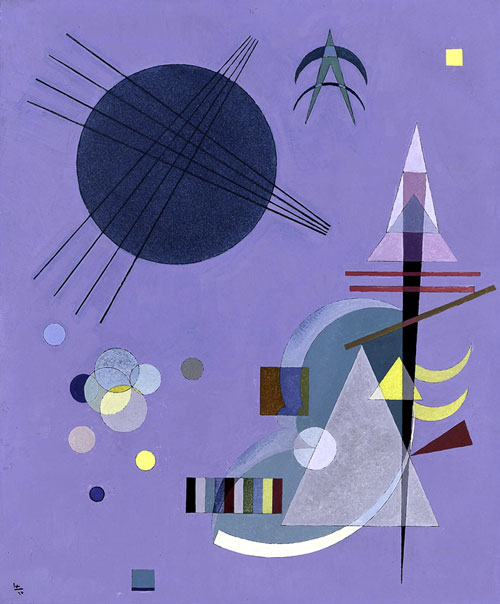
Kandinsky's Violet Green, 1926
Engineering Tools:
This painting, resembling a canvas of engineering tools, ignited my
inspiration to design my products with precision and creativity.
In Kandinsky's world, color was not just a visual element; it was a
language, a means of expressing emotions, and a tool for storytelling.
His ability to translate music into vibrant hues spoke to me on a profound level. It was as if a new world had opened in front of my eyes—a world where color
danced with form and function.
Kandinsky believed in the intrinsic connection between art and music, where
each brushstroke resonated with the harmonies of a grand composition. This
revelation was transformative for me as an engineer. It made me see that design
engineering, too, could be an art form, where color could breathe life into
functionality.
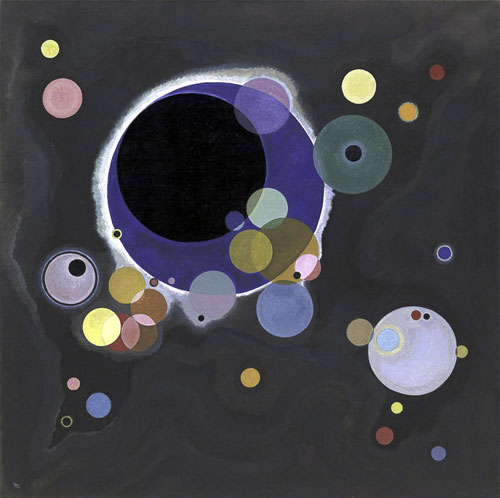
Kandinsky's Several Circles, 1926
Springs on a Progressive Die:
I envisioned the springs in a progressive die
dancing to the rhythm of music and color.
Music became the thread that wove through every aspect of my creative journey.
I began to design with art in my heart and the melodies of classical compositions
in my ears. This infusion of creativity allowed me to see engineering challenges
from a different angle. No longer confined by the boundaries of conventional
thinking, I started to envision innovative and aesthetically pleasing solutions, now
richly colored by Kandinsky's influence.
My engineering designs began to reflect this newfound inspiration. They
embraced organic and structured shapes, elegant yet functional aesthetics, and a
keen awareness of the interplay between form, function, and color. I understood
that the principles I had gleaned from great modern and abstract artists could be
applied to engineering, creating products that were not only efficient but also
visually captivating.
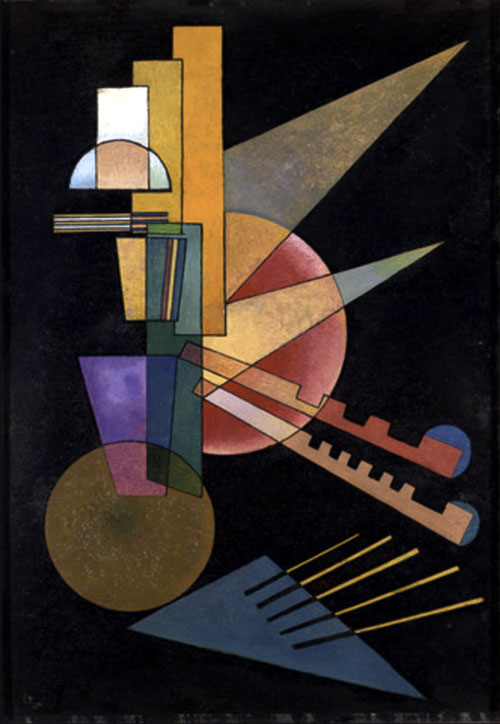
Kandinsky's Abstract Interpretation, 1925
Design Study for Special Equipment
: my Design Motion Study creations for special
equipment closely resemble this painting, a vivid tapestry of color.
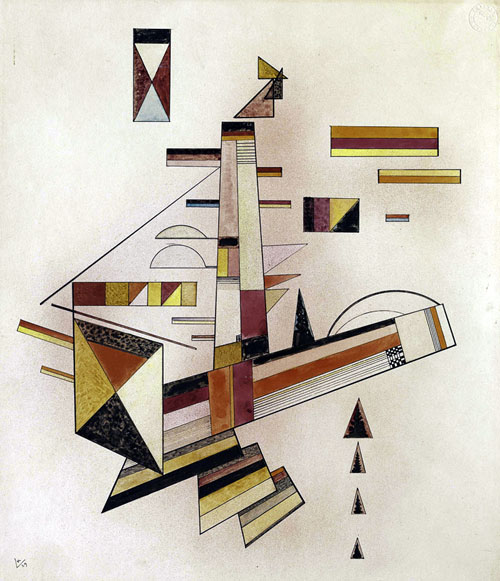
Kandinsky's 1929 painting, Certainly, perfectly captures
the essence of
motion study
in various engineering product designs.
This shift in perspective didn't just make me a better engineer; it made me a
more creative one. I found that I could draw inspiration from art, music, and
engineering to push the boundaries of what was possible in my field. It wasn't just
about solving problems; it was about crafting solutions that were works of art in
their own right.
But my artistic journey didn't stop at engineering. It propelled me to explore
other creative avenues that drew from the same design principles. Photography
became a passion, a medium through which I could capture the interplay of
organic and structured shapes in architecture and the world around me. My
camera lens became a tool for translating the principles of design into visual
stories.
The architecture, in particular, drew me in—the kind that mirrored engineering's
precision and art's elegance. I found myself captivated by buildings that were not
just structures but artistic statements. I saw beauty in the balance of form,
function, and color, in the way buildings could harmonize with their
surroundings and evoke emotions.
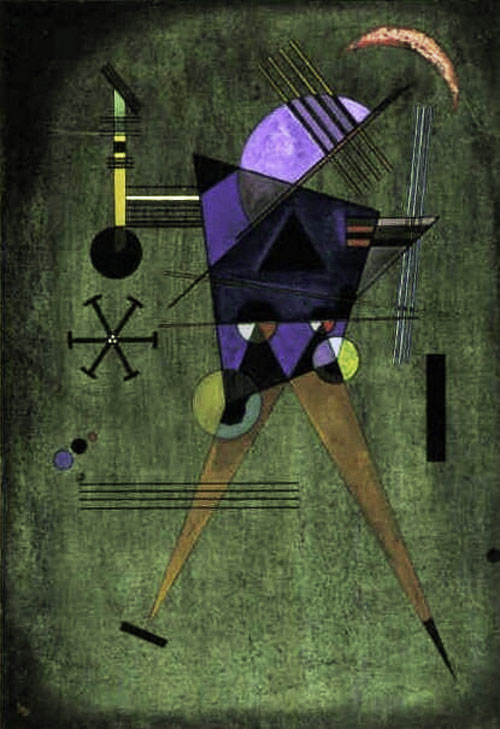
Kandinsky's 1925 Black Triangle
Study for Robot Design:
this painting masterfully embodies engineering principles
(Form, Fit, and Function).
In the realm of innovation, the most successful product companies are those that
understand the value of creativity in engineering. They grasp the idea that
precision, imagination, color, and music are not mutually exclusive but can
harmoniously coexist. It's a philosophy that elevates products from mere
functionality to objects of desire, from engineering marvels to artistic
expressions.
My journey is a testament to this vision, a testament to the enduring power of
creativity to shape our world. Kandinsky's influence on my engineering creativity
is a reminder that the boundaries between art, science, and music are porous,
and innovation thrives in the fertile ground between them. As I continue to
design with art in my heart, the echoes of Kandinsky's paintings in my mind, and
the melodies of classical compositions in my soul, I bridge the gap between two
seemingly disparate worlds, creating a symphony of engineering and artistry that
resonates with the spirit of the Bauhaus and the visionaries who believe in the
transformative power of creativity. It's a journey of endless discovery, where art,
engineering, photography, architecture, color, and music come together to create
a harmonious symphony of design and inspiration, a symphony that celebrates
the multifaceted nature of creativity in every aspect of our lives.
Now, having fully transitioned into the world of art, I immerse myself in painting,
photography, sculpture, and a deep appreciation of nature. This transition has
allowed me to explore the depths of creativity in its purest form. It's a world
where every stroke of the brush, every click of the camera, and every interaction
with the natural world is an artistic expression—a testament to the power of
creativity to shape our lives and our surroundings.
*
 |
 |
 |
 |
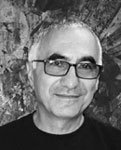 |
|
|
|
David Karamian
, Guest Writer
David
Karamian
holds a B.S.
in Mechanical
Engineering
and a Master
of Science in
Administration
(MSA) in
International
Studies. With
a 30-year
career
specializing
in design
systems and
application
optimization,
he has made
significant
contributions
while working
for and
consulting
with five of
the Fortune
10 companies.
David is also
the visionary
behind tech
startups
Siamanto and
PACE.
Currently, he
serves as the
Founder and
CEO of
NorArtGallery
Publishing,
and his 2022
coffee table
book, Armenia
- The Lone
Stone,
reflects his
creative
passion for
history,
photography,
art, and
poetry. An
accomplished
photographer
and painter,
he is a
regular
contributor
to Black
and White
Photography
Magazine.
|
|
|
 |
|
Curator, writer and editor, Kandinsky Anew Series
Lissa Tyler Renaud
MFA Directing, PhD Dramatic Art with Art History (thesis on Kandinsky's theatre), summa cum laude,
UC
Berkeley
(1987).
Lifelong
actress,
director.
Founder,
Oakland-based
Actors'
Training
Project
(1985-
) for
training
inspired
by
Kandinsky's
teachings.
Book
publications: The Politics of American Actor Training (Routledge);
an
invited
chapter
in the Routledge Companion to Stanislavsky, and ed. Selected Plays of Stan Lai (U. Michigan Press, 3 vols.). She has taught, lectured and published widely on Kandinsky, acting, dramatic theory and the early European avant-garde, throughout the U.S., and since 2004, at major theatre institutions of Asia, and in England, Mexico, Russia and Sweden.
She is a senior writer for Scene4.
For her other commentary and articles, check the Archives.
|
|
|
|
|
|